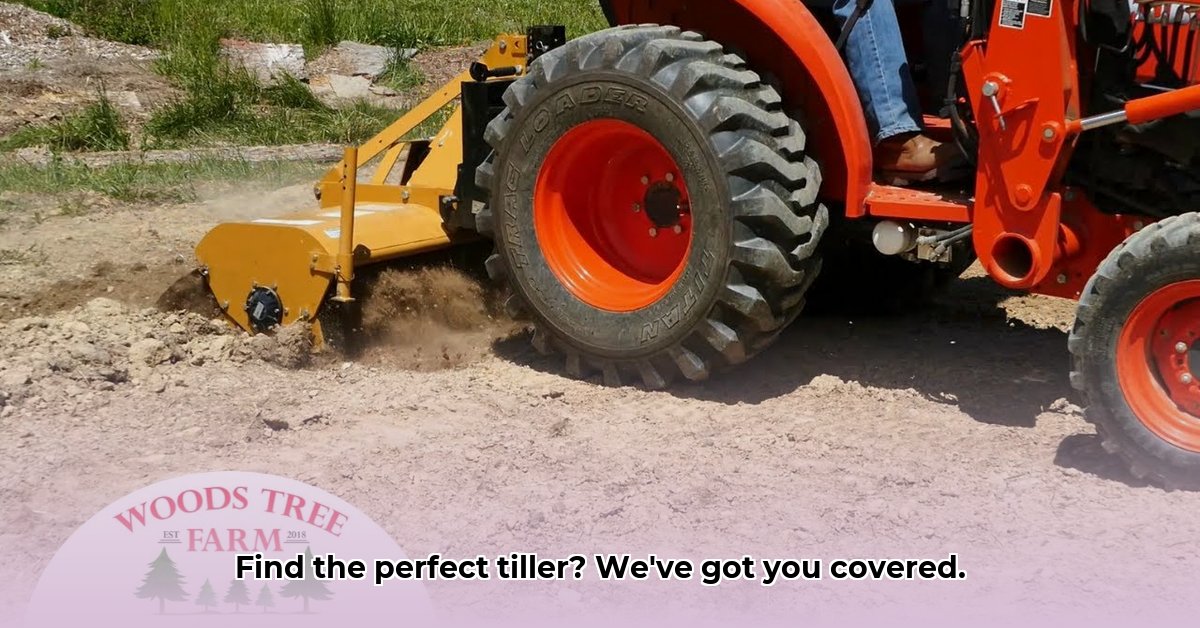
Choosing the right tillage equipment is crucial for sustainable and efficient farming. This guide helps you navigate the options available at Tractor Supply, focusing on 3-point hitch tillers, to find the best fit for your farm. For more tiller options, check out Tractor Supply's tiller selection.
Understanding Your Tillage Needs: Beyond Soil Turning
Before selecting a tiller, understand the different tillage methods and their implications for soil health and farm productivity.
Conventional Tillage: This involves deep plowing, effectively preparing the soil but potentially leading to soil erosion, compaction, and nutrient loss. It's like constantly tilling your garden – eventually, the soil weakens.
No-Till Farming: This method avoids plowing, planting seeds directly into the existing ground cover. It enhances soil health, water retention, and reduces erosion. Think of it as keeping the soil undisturbed and healthy.
Conservation Tillage: A compromise, it minimizes soil disturbance while adequately managing weeds and preparing the seedbed. It's a gentle awakening for the soil, balancing the benefits of both conventional and no-till approaches.
The optimal method depends on your soil type, climate, crops, and personal preferences. Experimentation on a small scale is recommended before a complete farm-wide shift. Recent research continuously reveals new best practices for healthy soil management across diverse environments. What works for one farm might not work for all.
Picking the Right Tool: Tiller Types and Key Features
Tractor Supply offers various 3-point hitch tillers. Let's explore popular types:
Rotary Tillers: These pulverize the soil, creating a fine tilth ideal for seedbeds. They're best for preparing soil for planting small seeds and vegetables, but can be fuel-intensive for large areas. "They're great for preparing smaller vegetable patches," says Dr. Emily Carter, Soil Science Professor at the University of Arizona.
Disc Harrows: These cut and level the soil, mainly used for weed control and breaking up clods. More fuel-efficient than rotary tillers but don't create as fine a seedbed. Suitable for larger fields.
Offset Disc Harrows: These offer versatility, especially on hilly terrains, allowing for contour farming to minimize erosion. However, they typically demand more powerful tractors.
Beyond the type, consider:
Size: Match the tiller's working width to your tractor's horsepower. An incorrectly sized tiller impacts efficiency and potentially damages your tractor.
Fuel Efficiency: Consider fuel costs, particularly for large operations. Opt for fuel-efficient models. "Fuel efficiency is a major factor in long-term cost savings for many farmers," notes John Miller, Agricultural Engineer at Purdue University.
Durability and Maintenance: A tiller is an investment. Sturdy construction and readily available parts are crucial. Regular maintenance (sharpening blades, lubricating parts) extends the lifespan.
Cost: Consider the initial price, fuel costs, maintenance, and lifespan. A more expensive but durable model might be more cost-effective in the long run.
King Kutter and Tractor Supply's Offerings: A Comparative Overview
Tractor Supply carries various brands, including King Kutter, known for reliability. Yet, it's not a one-size-fits-all solution. Before purchasing, evaluate:
Features: Compare working width, tilling depth, and PTO horsepower requirements to match your tractor and operation scale. "Matching the tiller to your tractor's capabilities is crucial for optimal performance," advises Sarah Chen, Agricultural Machinery Specialist at Iowa State University.
Warranty and Parts: Check warranty terms and parts availability, especially if you're in a remote area.
Reviews: Read online reviews from other farmers for valuable insights.
Maintenance, Operation, and Safety: Ensuring Smooth and Safe Tillage
Proper maintenance and safety protocols are paramount:
Pre-Operation Inspection: Always inspect for debris before use.
Regular Maintenance: Lubricate, sharpen/replace blades as needed. This prevents damage and extends the tiller's lifespan.
Safe Operation: Follow the manual's safety guidelines. Wear protective gear (eye protection, hearing protection). Never operate when tired or impaired.
Troubleshooting: Be familiar with common problems and troubleshooting methods. Preventative maintenance minimizes downtime and repair costs.
Technology and Cost: Maximizing Your Investment
Precision agriculture is transforming farming practices. GPS-guided tillers offer improved accuracy, minimizing overlaps and wasted fuel. Soil sensors provide real-time feedback, optimizing tilling depth and minimizing environmental impact. While technology adds upfront cost, the long-term savings in fuel, labor, and environmental benefits often justify the investment.
Analyze the total cost of ownership—initial investment, fuel, maintenance, labor, and long-term soil health benefits—for a comprehensive cost-benefit analysis.
Making the Right Choice for Your Farm
Choosing the best 3-point hitch tiller requires considering your soil type, crops, operation size, and budget. Thorough planning minimizes wasted resources and maximizes your farm's productivity and sustainability.
Tiller Type Comparison
| Tiller Type | Pros | Cons | Best Suited For |
|---|---|---|---|
| Rotary Tiller | Excellent seedbed preparation; versatile soil types | Fuel-intensive; higher initial cost; more maintenance | Smaller gardens; vegetable farms; diverse soils |
| Disc Harrow | Less fuel-intensive; good for weed control | Less effective seedbed preparation; heavy clay issues | Larger fields; weed management |
| Offset Disc Harrow | Versatile; contour farming; erosion reduction | Requires more powerful tractors; higher cost | Hilly terrain; contour farming; larger acreage |
Remember, consult your tractor's and tiller's manuals before operation. Choose wisely, and happy tilling!